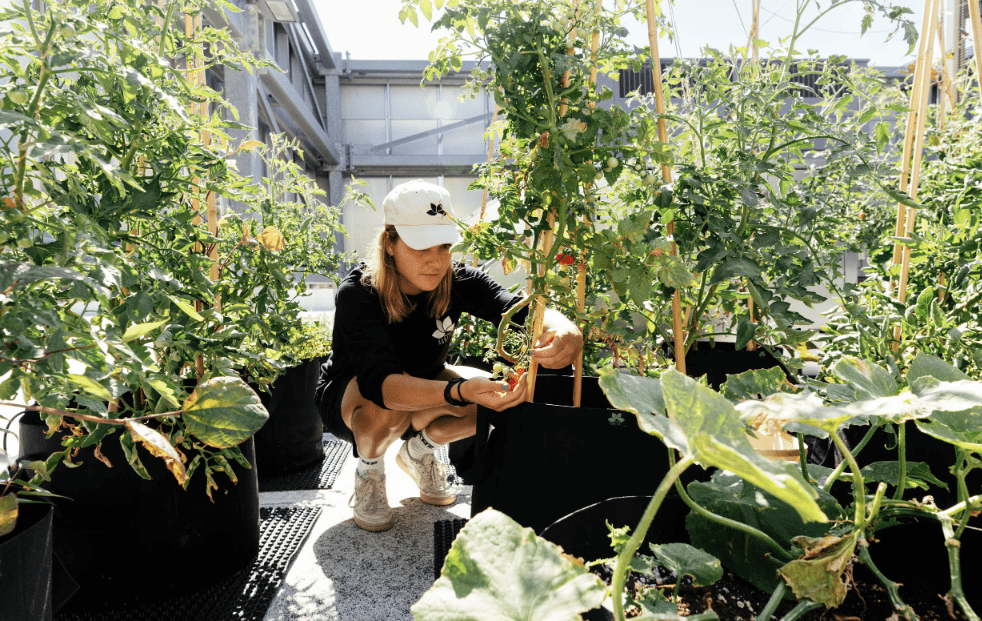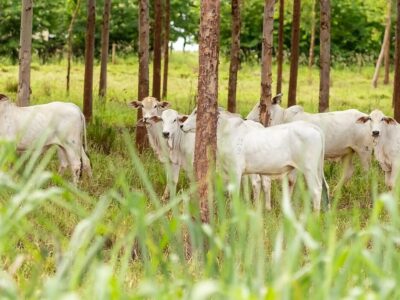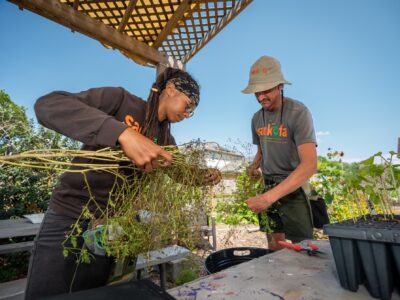Based in Montreal, MicroHabitat has a pretty unique business model. As urban farming increases in popularity, the need for services and resources is paramount. If corporations or residential businesses are struggling to set up a rooftop farm, MicroHabitat can help. The company sells urban agriculture as a service to property owners.
The company was founded by Alexandre Ferrari-Roy and Orlane Panet in 2016. Ferrari-Roy’s work began in Montreal, setting up farms on businesses in the Canadian city. The goal was to make properties more valuable and sustainable while engaging with the community.
Based out of McGill University’s MacDonald Campus, the company has expanded its reach to Toronto, New York, and Vancouver. As of April, there were plans to add six more cities. As of June, the company lists Calgary, Edmonton, Los Angeles, and Washington, D.C., as other cities they work in.
Ferrari-Roy told Garden and Health his inspiration was two-fold: Masanobu Fukoka’s ecological farming book, “The One-Straw Revolution,” and the statistic of 1% of the population feeds the remaining 99%.
“I find that crazy. There are all these concepts and types of behaviors I saw in society that I was against,” Ferrari-Roy said. “In a way, the only escape I had at the time was to tell myself, ‘What can I do to change the way people view agriculture, how they view food, and their interactions with the food they consume?’”
Photo Courtesy MicroHabitat
The company has taken off. The numbers speak to its success: 140 farms were set up in 2022 across Montreal, Toronto, New York, and Vancouver. He’s even established urban agricultural plots on prominent buildings. One example is the one on the Canada Life Building in Toronto. Ferrari-Roy said this was a huge achievement for the company.
Another is a large Manhattan apartment complex called StuyTown. The complex is particularly interesting because it offers nutritious foods to people with low incomes and raises awareness about environmental issues.
The urban farms couldn’t be set up without collaboration between real estate developers and MicroHabitat. GWL Realty Advisors worked with the farming venture to set up gardens on eight of the real estate firm’s buildings. Elizabeth Schreurs, the real state firm’s senior director of property management, said this fuels more community engagement and combats food insecurity.
They even have beehives on roofs to encourage pollination. They also worked with Ivanhoé Cambridge, a multinational real estate company.
Photo Courtesy MicroHabitat
The need for urban farming seems to be only increasing. More people are moving to cities, meaning more people need access to fresh produce. The demand has increased, but only 1.4% of the U.S. population are farmers. Supply chain issues and chemical use are other concerns in agriculture.
However, urban agriculture has improved thanks to advances in technology. Hydroponics, vertical farming, chemical phase-outs, and automated control systems help save water and reduce pollution. Growing crops in cities also cuts down on supply chain distance.
Ferrari-Roy believes an urban farm model designates its success. “The question is ‘who needs the food,’ right?” he said. “We adapt our model to the needs of our clients. Some really want that positive impact on food security.”
“We have a program called the Urban Solidarity Farms Initiative, which allows our clients where we add in the donation of their harvest to local food banks,” Ferrari-Roy explained. That adaptability allowed 70 farms to grow 45,500 pounds of vegetables, and that’s only half of the total projects MicroHabitat operates.
The MicroHabitat installations can produce eggplant, tomatoes, sweet peppers, onions, beans, and leafy greens. The diverse range of production ensures a greater success rate. It also attracts more pollinating insects.
“These are high-quality vegetables you can’t find anywhere else other than the farmer’s market,” Ferrari-Roy said. He mentioned how all crops are hand-harvested, keeping with the holistic approach outlined in Fukoka’s book. MicroHabitat uses micro-drip irrigation systems to water crops, designed to use as little water as possible. No synthetic fertilizers are used in the growing process.
“We have an algae fertilizer that’s based out of Montreal. It’s a new, up-and-coming company that we might be working with in the future. Basically, it’s like fermented algae tea,” Ferrari-Roy explained. Again, another all-natural approach to urban farming.
Photo Courtesy MicroHabitat
The coolest benefit of MicroHabitat’s farms is where these vegetables go after harvest. According to the MicroHabitat website, the 140 farms in 2022 donated to 26 food banks, and 20,500 pounds of donated food made 25,900 meals. In total, 45,500 pounds of food were harvested. The farm at the Warrington PCI Management building in Vancouver yielded 1,300 pounds of produce for the city’s food banks.
“Normally, producers will produce one kind of corp throughout their whole lot,” Ferrari-Roy said. “For us, it’s really small zones, and we try to have between 20–25 different types of varieties growing all in the same area. Those varieties are complementary to one.”
MicroHabitat’s work exemplifies how urban farming can successfully combat food insecurity while reinforcing supply chains, reducing shipping distances, and using holistic agriculture in cities. Hopefully, more North American cities adopting these agriculture structures will make more tasty vegetables easier to buy and put on your dinner plate.





